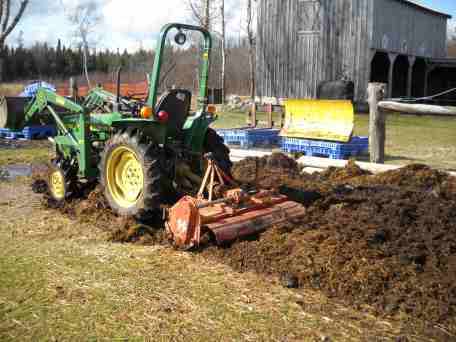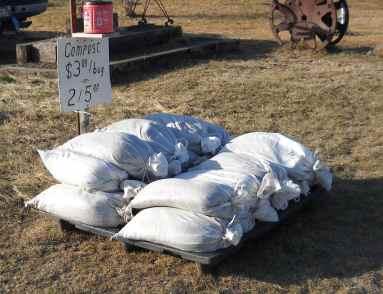

All of the animal waste, bedding, large lots of lawn clippings and leaves and any bulk source of compostable material is gathered into a large pile. A cubic yard is pretty much the minimum workable amount. The only upper limit is space. It shouldn't be piled much over 6' high as it will compress under it's own weight and squeeze all the air out. Anaerobic decomposition produces slime and odor. To get effective composting, you need air.
The pile grows over the Winter with little if any composting action. In the Spring, when temperatures start coming up, the pile will begin to decompose and generate heat. You can actually see steam rising from the pile on chilly mornings once it starts working.
The pile will need to be turned over to re-aerate it and mix uncomposted material back into the center of the pile where the process works best. Deciding when to turn the pile is based on temperature.


I also compost the "leftovers" from butchering chickens. This process needs to be done VERY carefully to avoid problems with pathogens. I do it in a separate bin and I use very dry, highly absorbent, high carbon mix. Coarse sawdust from chainsawing firewood or finely chopped fall leaves work well.


The process of mixing and aerating the compost inevitably mixes rocks and other noncompostable materials into the pile. Also, you will have twigs and other uncomposted material mixed in. I screen the finished compost to remove such unwanted matter. I use a piece of expanded metal with 1/4" openings, and the bottom of the screen has a "funnel" made from the top of an old chick brooder that directs the screenings into a 5 gallon bucket. The whole works is driven by a snowblower engine and drivetrain which gives me variable speed and a clutch so I can start and stop it as needed. The screen portion tips forward to dump the screened out materials.
